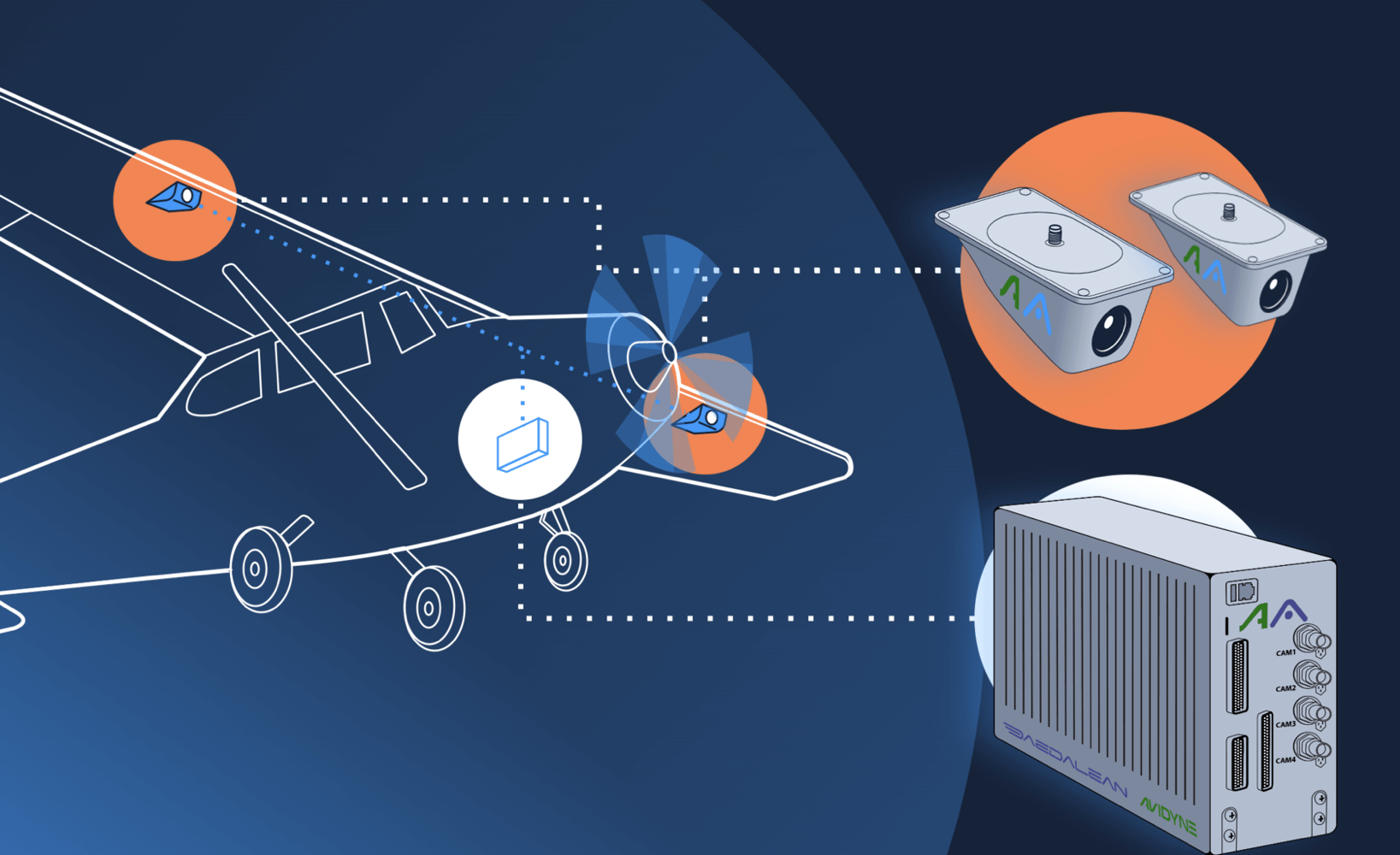The avionics manufacturer Avidyne is teaming up with Daedalean, the Swiss artificial intelligence (AI) startup, to develop a detect-and-avoid system for general aviation aircraft using Daedalean’s computer vision technology.

Avidyne already offers traffic advisory products for airplanes and helicopters, but these active surveillance systems only detect aircraft that are equipped with transponders or automatic dependent surveillance – broadcast (ADS-B) systems. By contrast, Daedalean is using a specific form of AI, convolutional neural networks, to analyze visual images from high-resolution cameras in a way that can identify potential hazards — such as small drones that aren’t broadcasting their position.
Ultimately, Daedalean aims to develop an AI-based autopilot that will enable future aircraft to fly autonomously. For now, the detect-and-avoid system it is developing with Avidyne will function as a pilot assistance tool, which means it could find its way into existing cockpits within the next few years.
According to Daedalean CEO Luuk van Dijk, the company’s computer vision technology is already at technology readiness level (TRL) 6, meaning it has been demonstrated in a relevant environment. The collaboration with Avidyne will take it through the next steps to commercialization, benefitting from Avidyne’s expertise in hardware design and certification.
“We’re really happy with this agreement,” said van Dijk, explaining that it will allow Daedalean to focus on its strengths as a software developer. “The commercial agreement is really about [bringing] this detect-and-avoid function to the market together — they do the box, we do the software.”
Tom Harper, Avidyne’s marketing director, likewise described the collaboration with Daedalean as “a great partnership,” and highlighted his company’s experience in certification flight testing. “In addition to designing the physical hardware to host their software, we’ve got a hangar out at the Melbourne [Florida] airport we do our own flight testing and certification flights, and go through the entire FAA [Federal Aviation Administration] certification process. . . . That’s really where our expertise comes in, because we’ve been doing that for 25 some years,” he said.
Although the barriers to certification aren’t as high for a pilot assistance tool as they would be for a full autonomy system, they’re not trivial. Among other things, the companies will have to prove that their system doesn’t create unnecessary distractions.
“For visual detect-and-avoid, the false positive — thinking that there is a thing, when there really isn’t — is really a very hard part,” van Dijk acknowledged. “So we’re going to have to prove that we don’t distract the pilots too much with false alarms.”
They’ll also need to design a functional user interface, presenting alerts to the pilot in a display that is meaningful without being cluttered. As Harper pointed out, however, “We deal with those same challenges with traffic systems, lightning systems, onboard radar, terrain alerting, those sort of things — so we’d see it as just another sensor in the airplane to display as a layer.”
According to van Dijk, the companies are hoping to have a product ready for the market by 2022. Harper predicted that the detect-and-avoid system will be of particular interest to helicopter operators because of the potential for conflict with small drones at the low altitudes where helicopters fly. The U.S. National Transportation Safety Board reported in July that it has completed three investigations where a collision with a drone was confirmed, and gathered information on two other collisions where the evidence was consistent with a drone strike.
Longer term, both companies have their eye on the nascent eVTOL and urban air mobility market. Daedalean has relationships with eVTOL developers including Volocopter and Dufour Aerospace, and has been working with the European Union Aviation Safety Agency (EASA) to define concepts for certifying AI in flight-critical functions. Avidyne founder and president Dan Schwinn has launched another company, Autonodyne, which is focused on developing software and hardware for autonomous and highly automated aircraft.
“We are leveraging some of the current Avidyne avionics into the unmanned vehicle and eVTOL market space already,” Harper said. “It’s such a dynamic market space right now, but we’re very much plugged into it and trying to see where we can fit in.”









